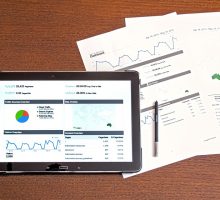Blogging has become a popular medium for digital nomads to share their experiences, insights, and expertise while traveling the world. As a digital nomad, maintaining a blog can offer numerous psychological benefits that contribute to overall well-being and fulfillment. From enhancing creativity to fostering a sense of purpose and connection, blogging can have a profound impact on mental health and emotional resilience.
Enhanced Creativity
Blogging allows digital nomads to express themselves creatively through writing, photography, and design. The process of crafting engaging content encourages creative thinking, problem-solving, and self-expression, which can stimulate the mind and enhance overall creativity.
Sense of Accomplishment
Publishing blog posts and receiving positive feedback from readers can instill a sense of accomplishment and pride in one’s work. The act of setting goals, meeting deadlines, and seeing the tangible results of your efforts can boost self-esteem and confidence.
Community Engagement
Blogging provides digital nomads with a platform to connect with like-minded individuals, build meaningful relationships, and engage with a global audience. By sharing personal stories, travel tips, and expertise, bloggers can create a sense of community and belonging, which can combat feelings of isolation and loneliness while traveling.
Self-Reflection and Growth
Blogging encourages self-reflection and introspection as digital nomads document their experiences, challenges, and lessons learned along their journey. Writing about personal experiences allows bloggers to gain insight into their own thoughts, emotions, and values, leading to personal growth and self-discovery.
Sense of Purpose
Maintaining a blog can give digital nomads a sense of purpose and direction as they pursue their passions and share their knowledge with others. By documenting their adventures and sharing valuable insights, bloggers can inspire and empower readers while reaffirming their own sense of purpose and fulfillment.
In conclusion, blogging as a digital nomad offers a host of psychological benefits, including enhanced creativity, a sense of accomplishment, community engagement, self-reflection, and a sense of purpose. By embracing the blogging journey and harnessing its potential for personal and professional growth, digital nomads can enrich their travel experiences and cultivate a deeper sense of well-being and fulfillment on the road.







